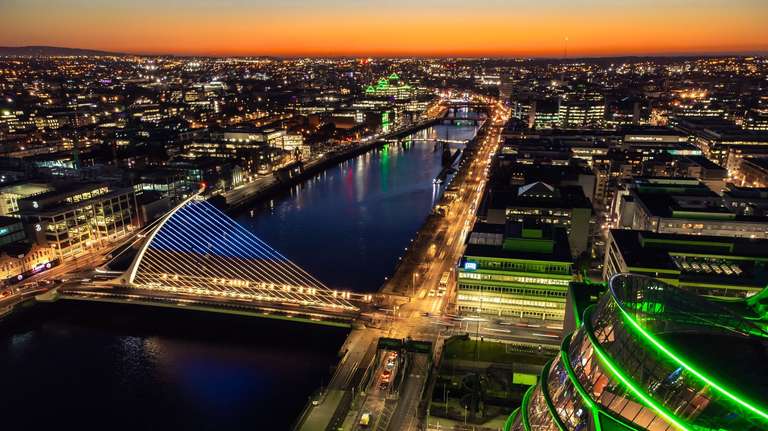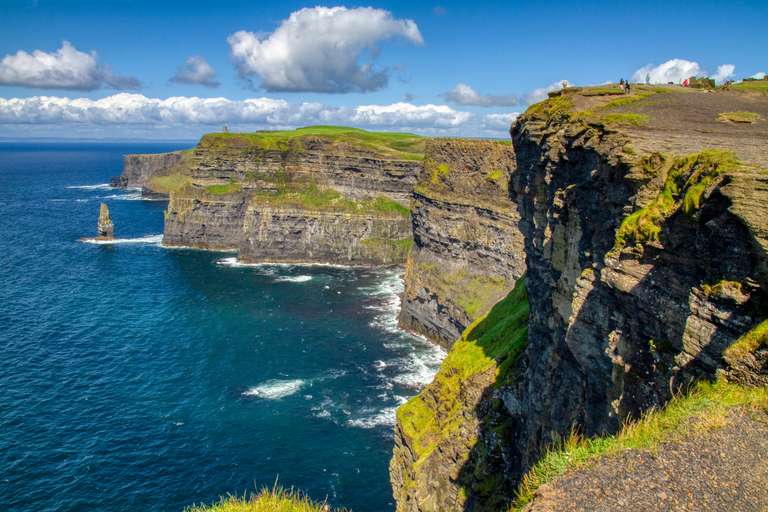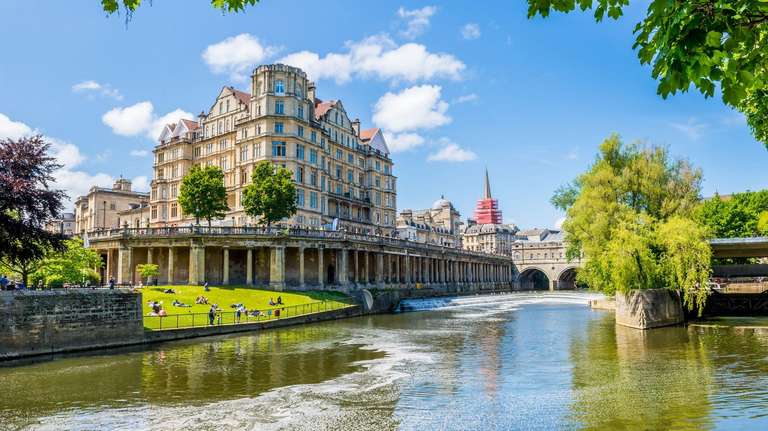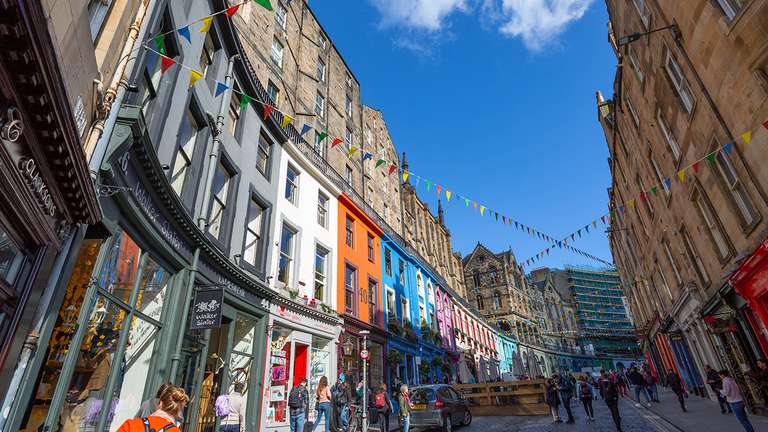Best Time To Visit Ireland
- Excellent
- Good
- Fair
- Poor
- JanAvg Daily: 7 ° CAvg Nightly: 3 ° C
- FebAvg Daily: 7 ° CAvg Nightly: 3 ° C
- MarAvg Daily: 10 ° CAvg Nightly: 4 ° C
- AprAvg Daily: 11 ° CAvg Nightly: 5 ° C
- MayAvg Daily: 15 ° CAvg Nightly: 7 ° C
- JunAvg Daily: 17 ° CAvg Nightly: 10 ° C
- JulAvg Daily: 19 ° CAvg Nightly: 12 ° C
- AugAvg Daily: 19 ° CAvg Nightly: 12 ° C
- SepAvg Daily: 17 ° CAvg Nightly: 10 ° C
- OctAvg Daily: 13 ° CAvg Nightly: 8 ° C
- NovAvg Daily: 10 ° CAvg Nightly: 5 ° C
- DecAvg Daily: 8 ° CAvg Nightly: 5 ° C
- Excellent
- Good
- Fair
- Poor
- Shelly A
- From
- Shelly A
- From
- Beatrice B
- From
- Denny R
- From
When is The Best Time to Visit Ireland: Quick Facts
- Best Time to Visit: June – September
- Low Season: November – February
- All Seasons: June – September, November – February, March – May, September – October
- The best time to visit Ireland is between June and September when the temperatures are at their highest, but accommodation rates are at their highest. Rainfall can also be particularly low during this season, allowing the sun to shine through. The influx of tourists will be high in Dublin and Kerry.
- The low season is between November and February when cold weather can be felt creeping in. The country is also at its wettest in these few months, with incessant rainfall at times. There is also a good chance of fog appearing throughout the country. At times, due to the weather, some attractions or tourist destinations may be closed just for the day or even the season.
- The shoulder seasons of Ireland are from Easter to May and September to October. During these seasons, the weather is quite good and is known to exhibit a quality that people have dubbed “Indian summer,” which means that while it may get hot, it might not be unbearable.
Ireland could, in theory, be visited all year round. However, as with most countries, it will be better to pay attention to the weather lest your favorite attraction be closed or rendered incomplete on your wish list. June to September may be the best time to visit Ireland due to its temperatures attracting quite a bit of sunlight and heat, making it perfect for Irish adventures.
When to Visit Ireland: Seasonal Overview
The best time of the year to go to Ireland depends on your preferences for weather and activities. For the most enjoyable experience, explore our recommendations for the best time to visit Ireland, ensuring you make the most of its lush landscapes, historic sites, and vibrant cultural events throughout the year.
1. Summer in Ireland — June to September
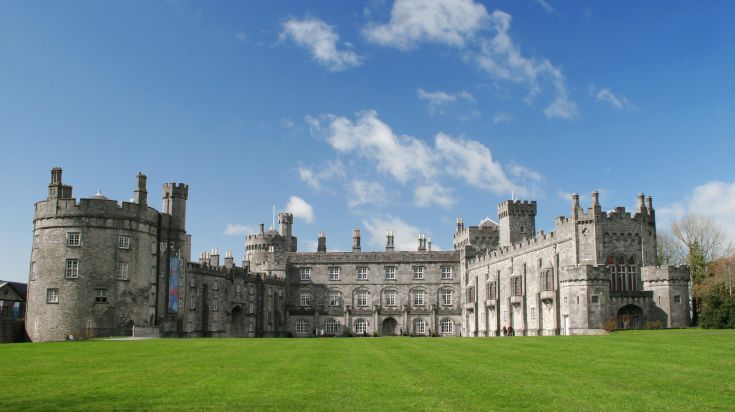
June to September provides ample sunshine, and lower levels of rainfall which means this is one of the best months to visit Ireland. June to September also proves to exhibit high accommodation rates which may be reflected in the prices for hotels and other accommodations rising. However, if one is prescient about it, you might still be able to snag a good deal on accommodations. June to September is when the crowds are in full swing, and this may prove to be slightly problematic with wait times at some attractions being longer than usual.
- Avg. Temperature: 57 – 61° F / 14 – 16° C (in Dublin)
- Rainfall: 60 – 70 mm
- Season: Summer
- Highlights: Dublin City may be the most happening place in Ireland, and the interesting thing about that may be the fact that it has been happening since the 9th century. The city seems to be a living memory of its time with its elaborate castles and forts.
In-depth month-wise guides:
Ireland in June
Ireland in July
Ireland in August
Ireland in September
2. Winter in Ireland — October to February

October to February is definitely considered the low season in Ireland. One can see that some tourist destinations may have reduced hours, while some may even be closed due to the pervasive cold weather that bogs most of the country. There is an eminent fog that adds to the mysticism of the Irish highlands. However it may be important to note, that while the weather can play a spoilsport on the rustic countryside, all city based attractions resume operations as normal. While it may be the low season, accommodations may be available for much more reasonable prices.
- Avg. Temperature: 41 – 46° F / 5 – 8° C (in Dublin)
- Rainfall: 80 mm
- Season: Winter
- Highlights: Galway City has always been known for its arty and bohemian style that seems to enrapture even the most heretic amongst us. It is deeply steeped in history but yet seems to vibrate with a contemporary vibe that attracts students and youth. Galway was once a medieval capital and this can be seen with remnants of town walls, Claddagh rings, and bridges that arch all across the cityscape.
In-depth month-wise guides:
Ireland in October
Ireland in November
Ireland in December
Ireland in January
Ireland in February
3. Spring in Ireland — March to May

Due to the geographical location of Ireland, the shoulder season can be divided into a timeframe of two periods, March to May or more appropriately Easter to May and Mid September to October. While both these shoulder seasons are relatively short in length compared to the other seasons, the shoulder periods boast a hybrid of good rain and sunshine making it one of the best time to travel to Ireland. Temperatures may not be as high they were in the high season but definitely does not drop as low as the winter months. Accommodation rates are definitely lower making it more attractive to travellers who want to save more.
- Avg. Temperature: 45 – 52° F / 7 – 11° C (in Dublin)
- Rainfall: 50 – 70 mm
- Season: Spring
- Highlights: Connemara may be a collection of bogs, cliffs, and valleys but beauty and magnificence is inherent to it. Connemara is a short scenic coastal route from Galway City.
In-depth month-wise guides:
Ireland in March
Ireland in April
Ireland in May
Weather in Ireland: Rainfall and Temperatures
| Months | JAN | FEB | MAR | APR | MAY | JUN | JUL | AUG | SEP | OCT | NOV | DEC |
| Avg Daily (°C) | 7 | 7 | 10 | 11 | 15 | 17 | 19 | 19 | 17 | 13 | 10 | 8 |
| Avg Nightly (°C) | 3 | 3 | 4 | 5 | 7 | 10 | 12 | 12 | 10 | 8 | 5 | 5 |
| Avg Daily (°F) | 45 | 45 | 50 | 52 | 59 | 63 | 67 | 67 | 63 | 56 | 50 | 47 |
| Avg Nightly (°F) | 38 | 38 | 40 | 41 | 45 | 50 | 54 | 54 | 50 | 47 | 41 | 41 |
| Avg Rainfall (mm) | 70 | 60 | 70 | 50 | 50 | 70 | 50 | 80 | 60 | 80 | 60 | 80 |

